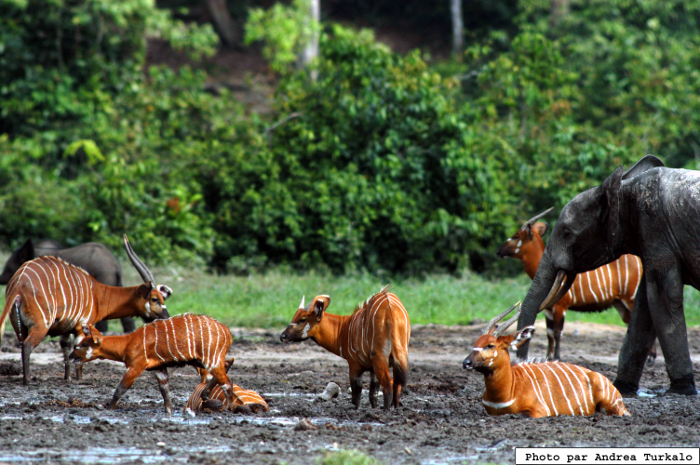
Healthy wetlands: potential for peace and security
-
Climate and disaster risks
Version francaise
The number of conflicts worldwide has dramatically increased over the last 10 years. This is displacing more and more people, and increasing human insecurity. While many affected areas centred around important wetlands, the relationship between wetlands, peace and security is barely recognised. With security issues dominating more and more the global agenda, it is time for a change.
While international organisations recognise the links between water, peace and security, still the role of wetlands remains largely unexplored. The High-Level Panel on Water and Peace, a panel made up of 15 UN member states, concluded last year that the global water challenge is not only about development and human rights but also about peace and security. The Hague Declaration on Planetary Security pointed in December 2017 at climate-related risk as a key factor in human security and conflict. In a declaration of the Secretary General in January this year, the UN International Security Council recognized that climate change and ecological changes have adverse effects on the stability of the Sahel region. It is time to bring wetlands into the equation.
Healthy wetlands can make an important contribution to holding the peace—while the loss of wetlands can contribute to growing insecurity. The Inner Niger Delta in Mali is a case in point. I had the opportunity to discuss this with Soumana Timbo, at an event that Wetlands International organised during an African conference about the Ramsar convention on wetlands.
Timbo, both Deputy National Director of Water and Forests and Ramsar Focal Point in the Ministry of Environment, Sanitation and Sustainable Development in Mali, explained how the ecosystem and the economy of the Inner Niger Delta depend on the annual inundation of the floodplains of the Inner Niger Delta. “Each reduction of the inundated area is translated into a large negative impact through diverse conflicts”, he said. “There are multiple challenges because the inhabitants of the Inner Niger Delta very often have different interests”.
The fewer the resources, the more conflicts—both within and between different users of the wetland: fishers, farmers and pastoralists. There are conflicts about access to the best fishing grounds or pastures, but there are also conflicts between different users: conflicts between farmers and pastoralists for example, because farmers don’t respect cattle trespass on water points and pasture, and because pastoralists don’t respect the agricultural cycle. In the region of Mopti alone there were already more than 500 conflicts linked to pasture, agriculture and fishing in 2016.
“The inundation characteristics of the Inner Niger Delta have changed because flooding has changed due to natural circumstances like climate change, but also due to the impact and management of new infrastructure upstream” Timbo says. “Rational and equitable management of the Delta’s ecosystems, and improving the resilience of its communities will help to calm the social climate and reduce the poverty of the populations”.

The condition of wetlands has an impact on human security, and insecurity also has an impact on wetlands. An influx of refugees for example can affect the condition of wetlands, and protection and restoration of wetlands can be hampered by conflict. At the same Ramsar conference, I also met Jules Tombet, National Expert on Participatory Management of Forest Resources in the Ministry of Water, Forests, Hunting and Fisheries of the Central African Republic (CAR). The situation that he is dealing with reflects an example of conflict affecting wetlands.

CAR has two protected wetland sites, Mbaere Bodingue, and Rivière Sangha. The wetlands, that consist of rivers, marshes, lakes and large areas of dense periodically flooded forests, are responsible for flood control and prevention in the area. This ensures that the livelihoods of local communities are minimally affected during the rainy season.
Tombet explained that due to the conflict that CAR experienced, these wetlands are affected by internally displaced persons in search of shelter. “Between one and three thousand IDPs have taken refuge in these wetlands, cutting trees to build tents and contributing to deforestation and erosion of riverbanks. My plan is to work with displaced people to restore these Ramsar sites while developing resilience activities”, he said, adding that 10 sites have been identified in the northern part bordering Chad. Given the still sensitive security situation, only stability will allow their effective classification into Ramsar sites.
“Wetland hotspots” include both wetlands that are contributing to insecurity and wetlands that are affected by conflict. These hotspots are not limited to Africa. The Mesopotamian Marshes in Iraq and Iran, for example, are also affected by conflict. However, a full overview of “wetland hotspots” is lacking.
We are not claiming that degradation of wetlands is the most important root cause of human insecurity and conflict – natural resources and their management are almost never the sole cause of violent conflict. However they can be significant drivers of conflict when interacting with a variety of political, social, ethnic and other factors. Degradation and loss of wetlands deserve much greater recognition and attention in relation to conflict and security.
In order to put the issue on the agenda of international organisations, we first need to get a better understanding of the location and situation of wetland hotspots. Sometimes this may be sensitive, especially if a situation involves two or more countries, such as is the case with the Mesopotamian Marshes. The Inner Niger Delta in Mali, the two protected wetlands in CAR, the Mesopotamian Marshes in Iraq and Iran, the Sudd in South Sudan, Lake Chad and the Lorian Swamp in Kenya are definitely on our list. Please feel free to add other examples and insights in the comments!
